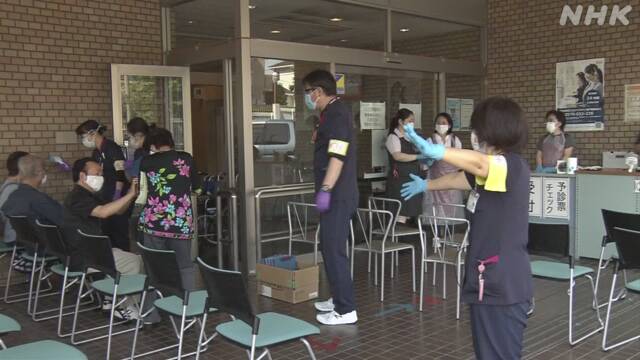As the vaccination of the new coronavirus progresses, the hospital in Saitama City is inoculating more than twice the national standard per hour by various measures such as assigning specialized staff to guide the elderly.
The Saitama Neuropsychiatric Center in Saitama City began vaccination of the elderly on the 31st of last month.
Approximately 6,000 patients visit this hospital each month, and we are making various efforts to efficiently promote vaccination while providing regular medical care.
Specifically, a full-time pharmacist will be assigned to prepare for vaccination, such as diluting the stock solution of the vaccine, and doctors in charge of vaccination will shift work every hour so as not to affect normal medical care. It corresponds.
In addition, we will assign a staff specializing in guidance to guide you from interviews to the inoculation site.
About the number of people that one doctor inoculates per hour The country assumes 20 people for mass inoculation, but this hospital inoculates up to 50 people.
And it means that the entire hospital can inoculate 300 people a day.
A man in his 70s who received the vaccination said, "I am very smooth and satisfied. I was relieved because I wanted to get the vaccination early."
Yuichi Maruki, director of the Saitama Neuropsychiatric Center, said, "I need a lot more manpower than a normal vaccine, but I think it's a medical mission. I think it will continue for a long time, but there is no doubt that the corona epidemic will be suppressed. Therefore, I hope that the efficiency improvement efforts will help the hospitals that are working hard on the front lines. "
Four ideas for improving vaccination efficiency
The Saitama Neuropsychiatric Center in Saitama City has four main measures to improve efficiency.
The first is to have a full-time pharmacist in advance.
In order to inoculate, it is necessary to dilute the stock solution of the vaccine with physiological saline and put it in a syringe for the number of people. From Monday to Saturday, 3 to 4 pharmacists prepare vaccines for 300 people over 5 hours. The pharmacist said, "Syringes that arrive from the country or prefecture may have different specifications each time they arrive, so we are working carefully while checking multiple syringes to make sure there are no mistakes."
The second is to improve the efficiency of reception.
The person receiving the vaccination will have the binder collect the necessary documents for the vaccination on the premises of the hospital. By assigning multiple nurses and checking the documents separately to see if they are incomplete, we have speeded up the process compared to when one person is lined up at the counter.
The third is to improve the efficiency of flow lines.
Those who have completed the reception will head to the inoculation site in the hospital, but the shortest flow line is one so as not to get lost. In addition, we have dedicated staff to guide elderly people who are lame or deaf.
The fourth is the rotation of the doctor who inoculates.
Of the 21 full-time doctors, one is in charge of inoculation and the time is less than one hour. Normally, by properly allocating the time spent traveling around the ward for inoculation, it is possible to organize rotation so that medical treatment is not affected.
On this day, the doctor in charge was able to inoculate 50 people as scheduled within one hour.

